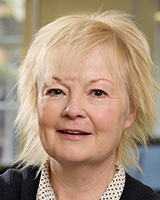Filling in the gaps – what is the future for white-space devices?
Industry plans for WSDs
Although white spaces exist in other frequency bands, there is particular interest in using white spaces in TV spectrum due to its favourable propagation characteristics, as well as the perception that there is more white space within TV frequency plans than in other bands. The large coverage areas of TV transmitters mean that the gaps where a frequency cannot be used in adjacent regions are larger than in other bands.
The amount of white space available varies considerably between regions and countries. There is typically more white space in rural areas than in urban areas, for instance. In addition, countries with large terrestrial TV markets generally have less white space, since available frequencies are relied on to provide the capacity and coverage needed for digital TV. In Europe, for example, the re-planning of UHF frequencies and creation of the 790–862MHz sub-band has further reduced the availability of white space.
How WSDs will work:
(a) built-in intelligence
A key question is how white-space devices (WSDs) will know which frequencies are already being used in the area where the device is operating, in order to avoid transmitting in those frequencies. One approach is to follow the concept of ‘cognitive radio’, where the device has intelligence that enables it to be aware of its surrounding environment, and adapt its operating parameters to avoid causing interference to other radio devices. Intelligent devices offer a number of benefits, reducing the network overheads associated with the operation of WSDs, lowering prices and improving users’ experience. One of the main applications being considered for WSDs is for the distribution of data, video, etc. in homes – and such a mass-market application will require easily configurable equipment. Reducing cost and complexity for users are therefore key drivers.
(b) using a central database
However, achieving truly cognitive capabilities within small consumer products is a technically complex and challenging task. An alternative solution is for WSDs to be connected to hubs that use an online database to obtain information on the frequencies and locations already in use. Devices connected to the WSD hubs can then be instructed to adapt their parameters accordingly. This approach has been proposed by both Ofcom and the FCC.
It is unclear who would maintain or fund such a central database. Ofcom has suggested that whilst it might host the database, the WSD industry should be involved in its development. Also, the TV industry might be best placed to maintain the information in the database (since it can provide updates on the location and frequency of TV transmitters). Funding, however, should be the responsibility of the WSD industry, since it is the main beneficiary of the database’s creation, in terms of the producer surplus created.
Best of both approaches
An ideal solution could lie between the two approaches of intelligent devices and a central database – for example, if devices have the intelligence to adapt their own parameters, as well as to enable dynamic update of information to maintain the database.
Conclusion
In summary, whilst a number of applications for WSDs exist, key questions remain. Further clarity is needed regarding the regulatory requirements, and in particular the development, operation and updating of the online database. Agreement on harmonised standards for WSDs is also essential to ensure that they achieve the sort of widespread availability, interoperability and economies of scale necessary for mass-market adoption. A further issue, in Europe at least, is the co-existence between WSDs and other users of TV white space – namely the Programme Making and Special Events (PMSE) industry, which has used frequencies within the TV spectrum for many years now.
Authors

Janette Stewart
Partner, expert in spectrum policy, pricing and valuationLatest Publications
Article
New thinking on spectrum valuation is needed for upper mid-band frequencies
Article
Why spectrum renewal policy matters for network investment and service quality
Article
Does the mobile market need additional sub-1GHz spectrum?

